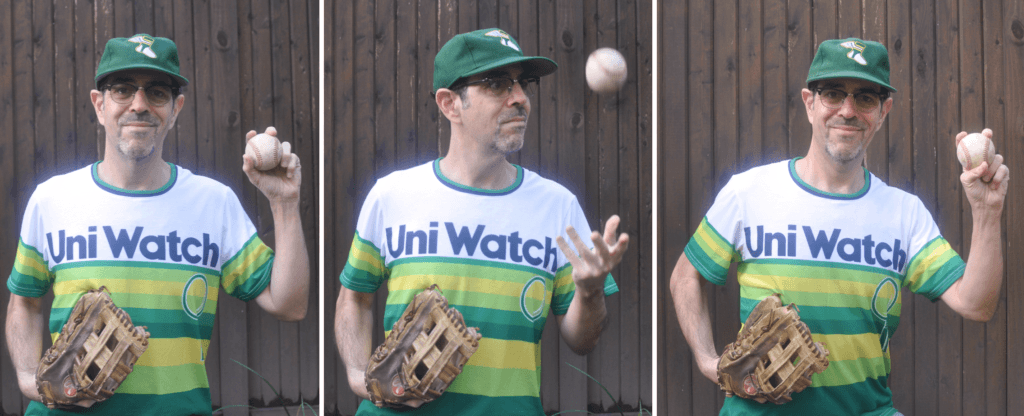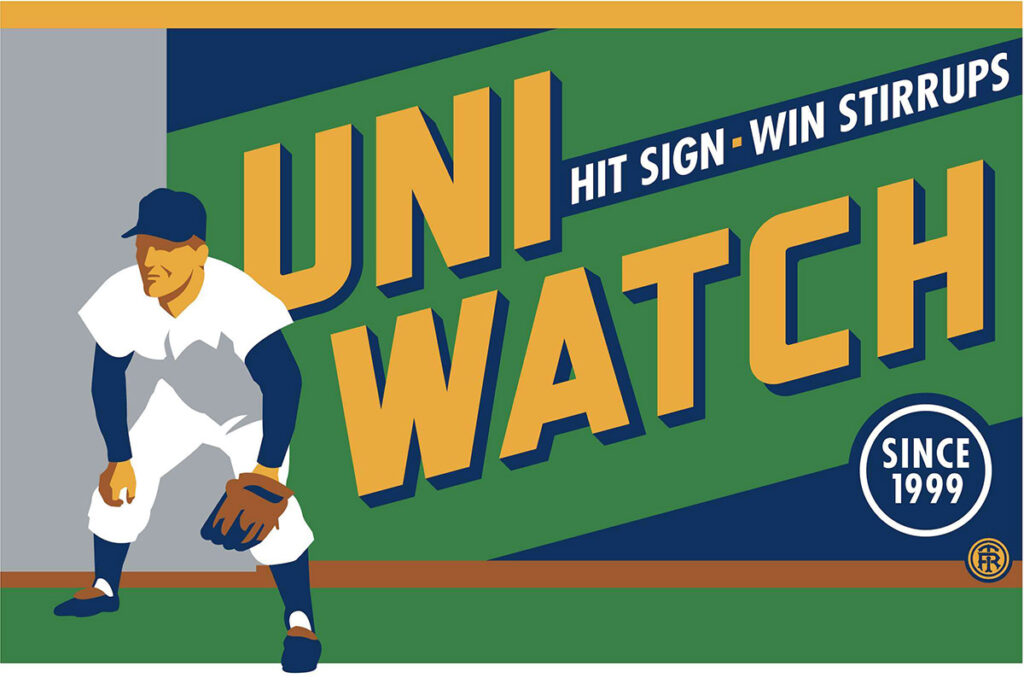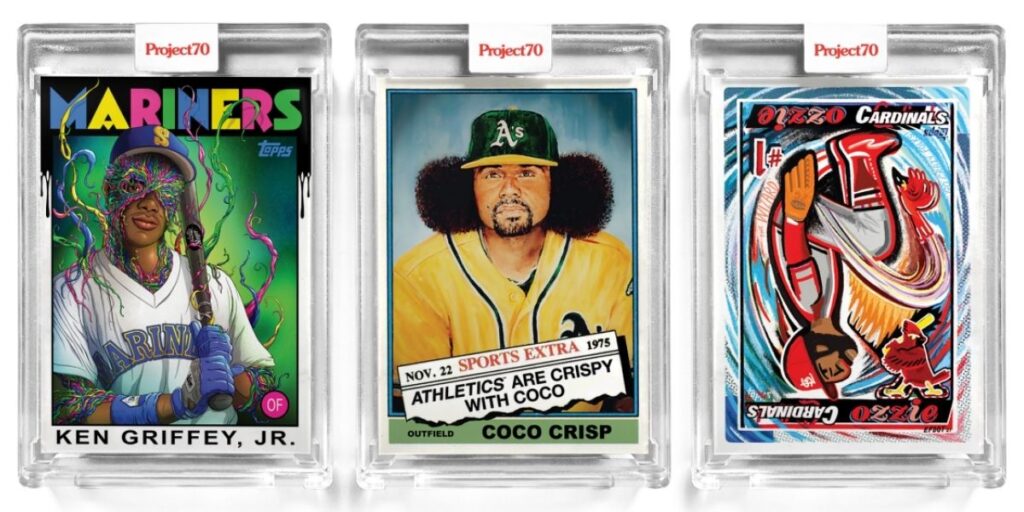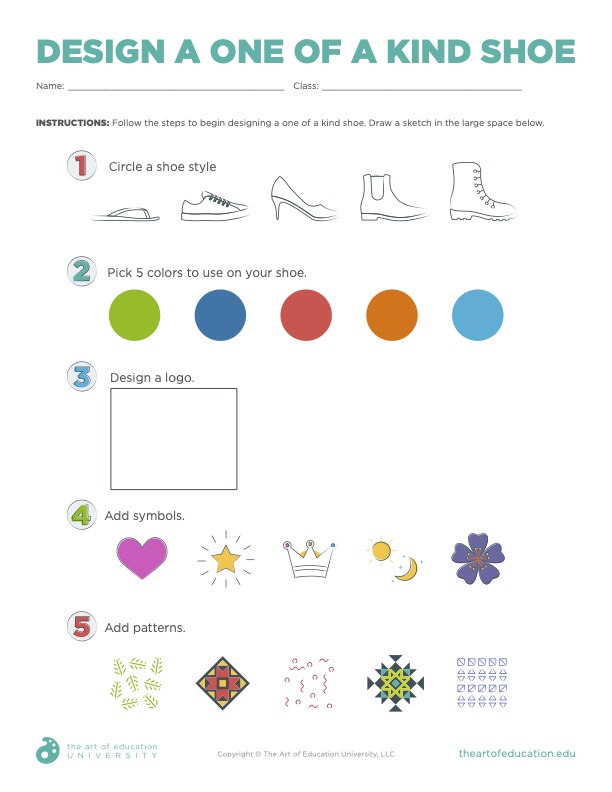People may have been surprised when baseball pitcher and five-time Cy Young Award winner Randy Johnson announced his second career as a photographer. Or, when actor Terry Crews shared that he relied on selling paintings to get by financially while bouncing between teams in the NFL.
In reality, art and sports have always been intertwined. Johnson’s photography logo pays homage to his infamous bird incident. The Oakland A’s commissioned 50 local artists to paint statues of their mascot, Stomper, and hid them around Oakland. With murals, sculptures, memorabilia, and more, people love to honor athletics through art.
The tie between art and sports is most evident in the world of sports design. From countless articles ranking Serena Williams’ on-court looks to accusations of Olympic logo plagiarism, sports design is an essential part of both the world of art and the world of athletics. Few people know that better than Paul Lukas, a journalist who covers uniform design.

Lukas has always been interested in sports design. “I was that kid who was doodling sports logos in the margin of my notebook instead of paying attention to the teacher,” he says. While working as a design journalist in the 1990s, Lukas realized he could write about sports design in the same way he analyzed packaging and industrial design in his columns. His only New Year’s resolution in 1999 pushed him to create a sports column about design, and Uni-Watch began that year. This niche site for “athletics aesthetics” that Lukas has curated for over 20 years continues to provide coverage, critique, and enthusiasm for all things sports design.
Lukas invites us to integrate core sports design elements into our art curriculums with 3 lesson ideas.
1. Celebrate what is local to you.
When asked about minor league baseball, Lukas shared that these teams have a continuity problem. Since they can change affiliation from season to season and players don’t stay long, these teams rely more on celebrating their local culture instead of building a team identity. Teams like the Fresno Tacos and Savannah Bananas provide quirky examples of how teams can honor the town they play in and have fun at the same time.
Challenge your students to create a team design celebrating something local to them. You could set up a competition to name your classroom or ask to hear a sales pitch for a fictional minor league team coming to your town. Lukas recommends checking out Brandiose and RARE Design for two very different approaches to developing a team brand if you are looking for resources.

Here are some ways you can include sports and sports design into what you already teach:
- Gesture Drawing
Sports and athletics provide an excellent opportunity to stretch your gesture-drawing muscles. Project a recorded gymnastics routine and challenge students to draw five-second gestures. Have students attend one of your school’s games and fill a page of their sketchbooks with observational gesture drawings. Or, just throw things at your students to get dynamic reference shots! - Color Theory
Color theory is everywhere in sports design. Have students compare the color palettes of your local teams or even of rival schools. - Package Design
A good uniform is an example of package design for a team’s brand. Students can analyze famous uniforms and compare them to their own school’s uniforms.
2. Design your own mascot.
Lukas is no stranger to goofy mascots that celebrate both history and location. Challenge students to design a mascot for their town or city. You could either have students redesign the current mascot or invent their own! If you want more involvement, try making it a class-wide contest with students working in pairs to design the mascot. Consider involving the community and invite town or city council members to hear a pitch from your champion designers.
For inspiration, read about Bonnie Erickson’s work designing the iconic Phillie Phanatic, and watch this engaging short from Sports Illustrated about the development of the Phanatic’s personality.
Are you looking for easily adaptable design challenges to fit your students’ abilities?
Templates are your friends! There are templates for sneaker, uniform, or cap designs readily available online for you to print for your students. Try out our Design a One of a Kind Shoe handout from the Fashioned Embroidery Lesson. For another fun shoe design project, check out Pop Art Sneakers. Find both of these lessons and many more in FLEX Curriculum.
Download Now!
3. Organize a Trading Card Extravaganza.
Trading cards, especially baseball cards, are a standard of many young sports fans’ lives. Many children dream of someday being on a card themselves. Paul Lukas may have been robbed of this opportunity, but he still got to visit the Topps offices and capture the experience. Cards are a valuable form of sports design that documents sports history and also provides a collectible.
To bring the excitement of memorabilia to the classroom, challenge your students to make original trading cards. The cards can be for a past or present athlete or someone they admire. Have students research different card designs. Students can also explore different eras to learn more about that period’s typography and graphic design.
Take this project to the next level by making it a service project. Students can design cards for staff members at your school. An excellent place to start researching would be Todd Radom’s portfolio.
It’s also important to remember that not all trading cards look the same. This variety leaves plenty of room for creative expression! For inspiration, check out Topps Project 70. For their 70th anniversary, Topps commissioned 52 diverse artists to each create cards for 20 players of their choice. Check out the archive and see if your favorite player was honored!

Sports extends far beyond major league sports in the United States. There are ways to bring extreme sports into the art room too!
Encourage students to design skateboard or snowboard decks, a surfboard, or even personalized decals for a motocross helmet. Toy Machine, Vans, Krooked, and artist Jim Phillips are great places for students to start researching. If you teach at a high school, check out Vans’ Custom Culture competition for the chance to win up to $50,000 for your art program!
By bringing sports into the art room, you can build a team among your students and capture the attention of those who may not feel like art is “for them.” Designing uniforms as a class can capitalize on one significant area where art and sports design overlap. Uniforms provide a sense of belonging and community; wearing a uniform or cap makes you feel like you are part of a team. Consider bringing this valuable connection and team-building opportunity to your student artists with Paul Lukas’ ideas.
Get daily Uni-Watch updates here, and find Paul Lukas on Twitter here.
How will you tie sports into at least one lesson you already teach this spring?
What is one aspect of sports design that would intrigue your students?
Magazine articles and podcasts are opinions of professional education contributors and do not necessarily represent the position of the Art of Education University (AOEU) or its academic offerings. Contributors use terms in the way they are most often talked about in the scope of their educational experiences.






